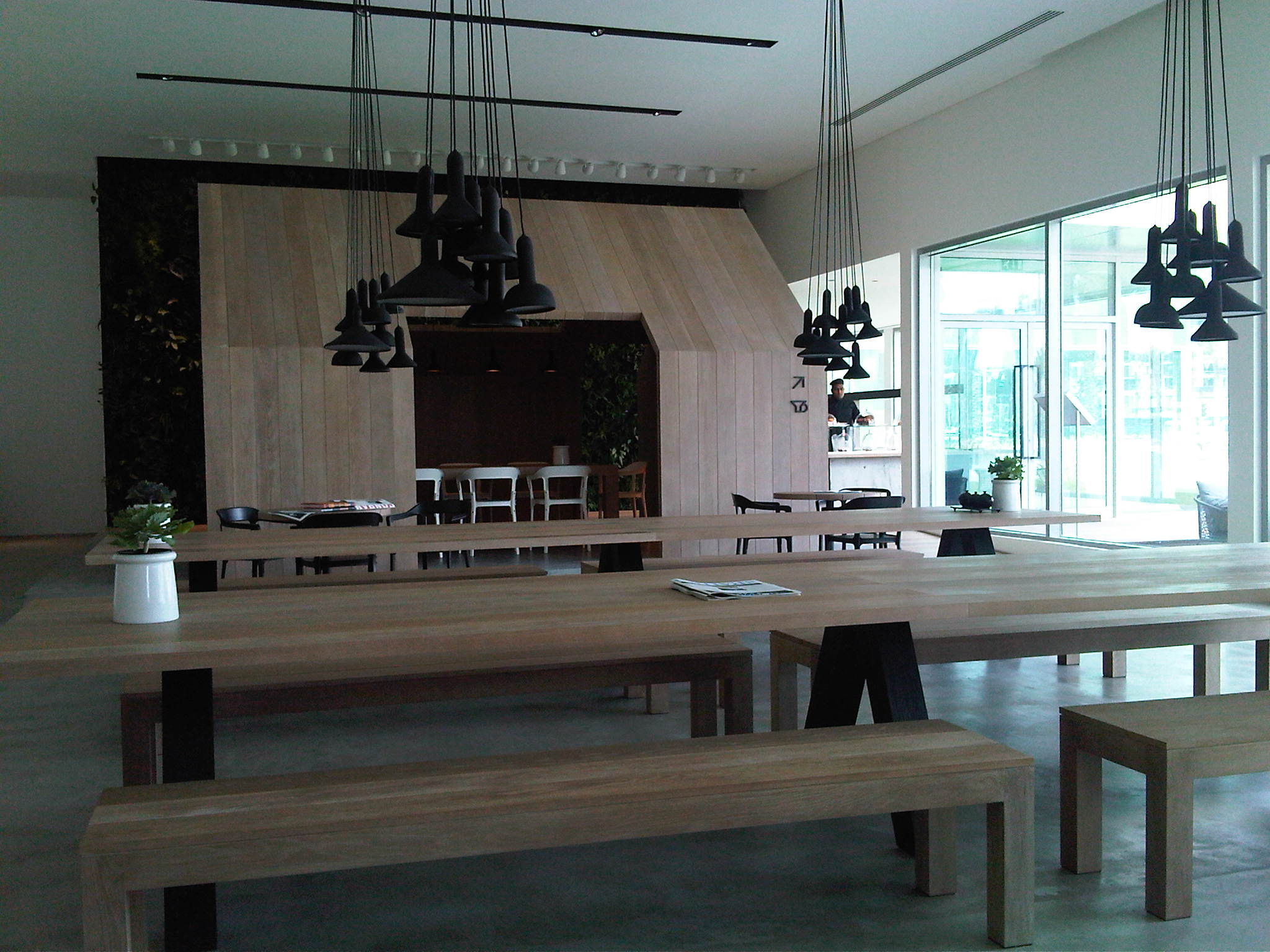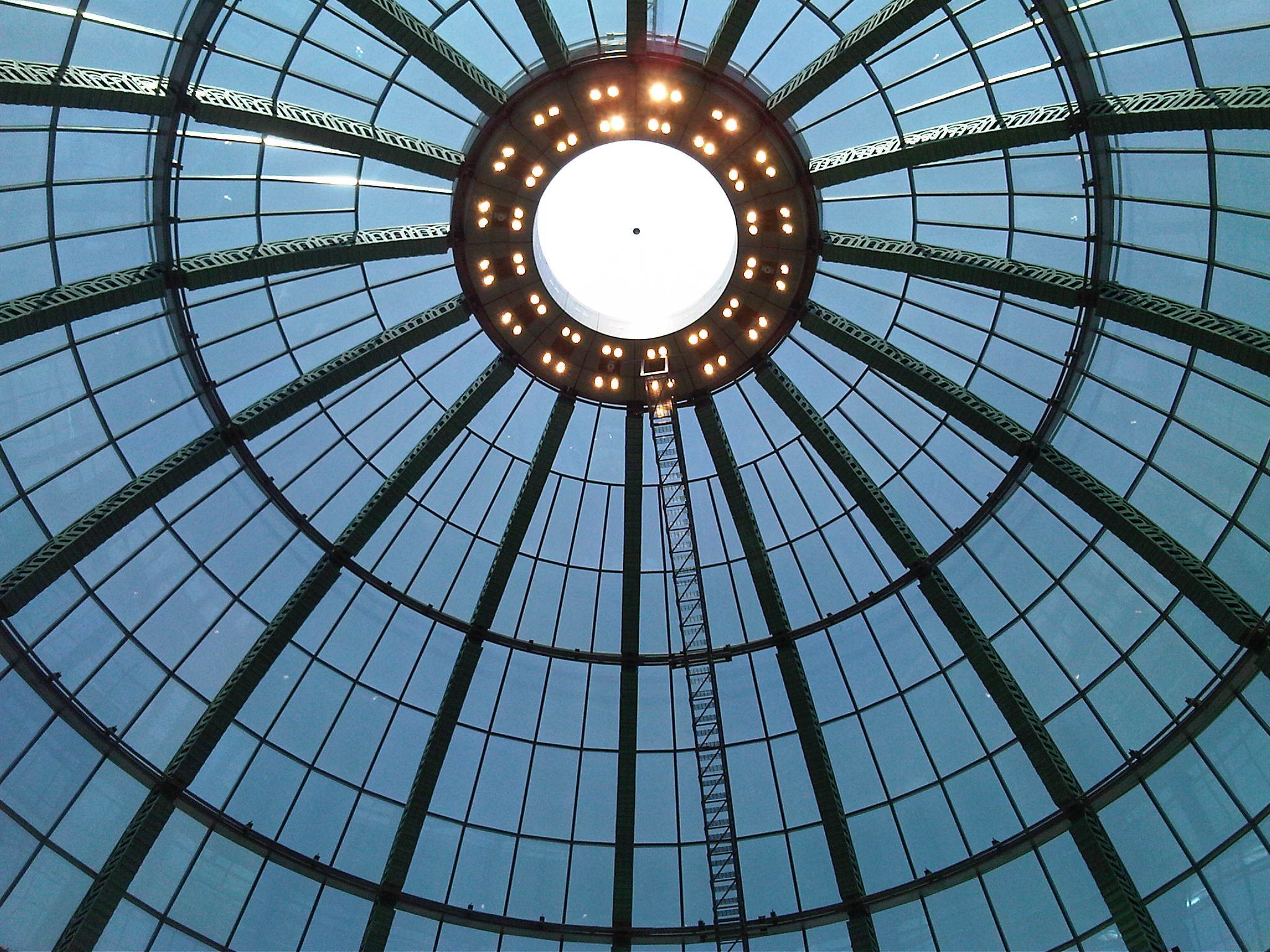Spaces to Places
 Tuesday, May 31, 2011 at 4:23PM
Tuesday, May 31, 2011 at 4:23PM 
Recently opened in Downtown Dubai, The Pavilion is a contemporary art space which not only encourages dialogue between art and its audience, but is also a vibrant space for the neighborhood, with galleries, a cinema, library, espresso bar and restaurant. The architect Abboud Malak has said, “It’s anything you want it to be; just come and bring your computer or socialise. It’s a versatile space and encompasses everything.... The people will make the space what it is.”
I often go there to do research, write or hang out with friends. The design with its natural woods has a very calming effect. It is a place where creatives can work, socialise or simply be.
Spaces become places when individuals or communities endow them with meaning. Spaces become places through the participation of people.
One’s experience of a particular space evokes emotion and memory and gives rise to what is often referred to as a sense of place. Some spaces are so designed that they encourage the individual to spend time there alone, others invite participation and interaction with others, and others encourage both.
Right now, we find ourselves having to move, more and more, in online space.
In a sense we have become online nomads, meeting fellow travelers from different places, countries and cultures in a space not limited by time. We often tend to wander from site to site, perhaps unaware that we are actually in search of online oases. These are sites that nourish and refresh, and where we are met with online hospitality. When this is not so, we simply click away and are transported down another corridor.
Whereas many see today’s technologies encouraging placelessness, this need not be the case. What is required of us now is a special generation of architects and designers, creators of online spaces which become special online places for current and future users.
Physical spaces designed by architects to encourage reflection or interaction are not empty. Their features encourage occupants of the space to interact with it in a particular way.
Online spaces need to be created in this way too.
Just as decorators move shapes around to find the right place and the right fit, so too the positioning of words, widgets, links, videos etc can be approached with mindfulness.
It is encouraging, for example, to see new blog technologies coming in to being that will move away from the linear and allow positioning of videos, pics and words all over a blank page. Such collage like blogging will most definitely promote creativity.
The spaces we occupy online deserve our respect. We can declutter by regularly emptying our mail boxes. We can consider not retweeting that which we have not read or watched. A mindful online presence will require that we don’t simply fill the space we encounter with mere words, simply for the sake of filling it.
If we have our own website, we should be aware that the home page is an online door. What image does it portray to the first time visitor. Does it encourage the visitor to enter? Is it welcoming? Does the architecture of the website enable the visitor to meet others there? Does it encourage the visitor to return? Does the visitor feel at home there? Does its mindful design include windows that provide vistas, and bridges that lead to new sites.
Is it a pavilion, a dome, a light filled space where others are encouraged to be?

I saw that my life was a vast glowing empty page and I could do
anything I wanted. - Jack Kerouac
The space where we meet online is like this too. It is certainly vast, and when we look at our handheld gadgets, it is certainly glowing. What are we going to do with it? What are we going to create?
 Downtown Dubai,
Downtown Dubai,  Dubai,
Dubai,  Jack Kerouac,
Jack Kerouac,  architecture,
architecture,  art,
art,  galleries,
galleries,  mindfulness,
mindfulness,  nomads,
nomads,  online space,
online space,  pavilion,
pavilion,  place,
place,  technology in
technology in  culture,
culture,  mindfulness,
mindfulness,  place,
place,  technology
technology  Email Article
Email Article
Reader Comments (1)
So often my fears prevent me from remembering this simple truth:
" I saw that my life was a vast glowing empty page and I could do
anything I wanted." - Jack Kerouac
Thoughtful, interesting post Linda. Thanks!